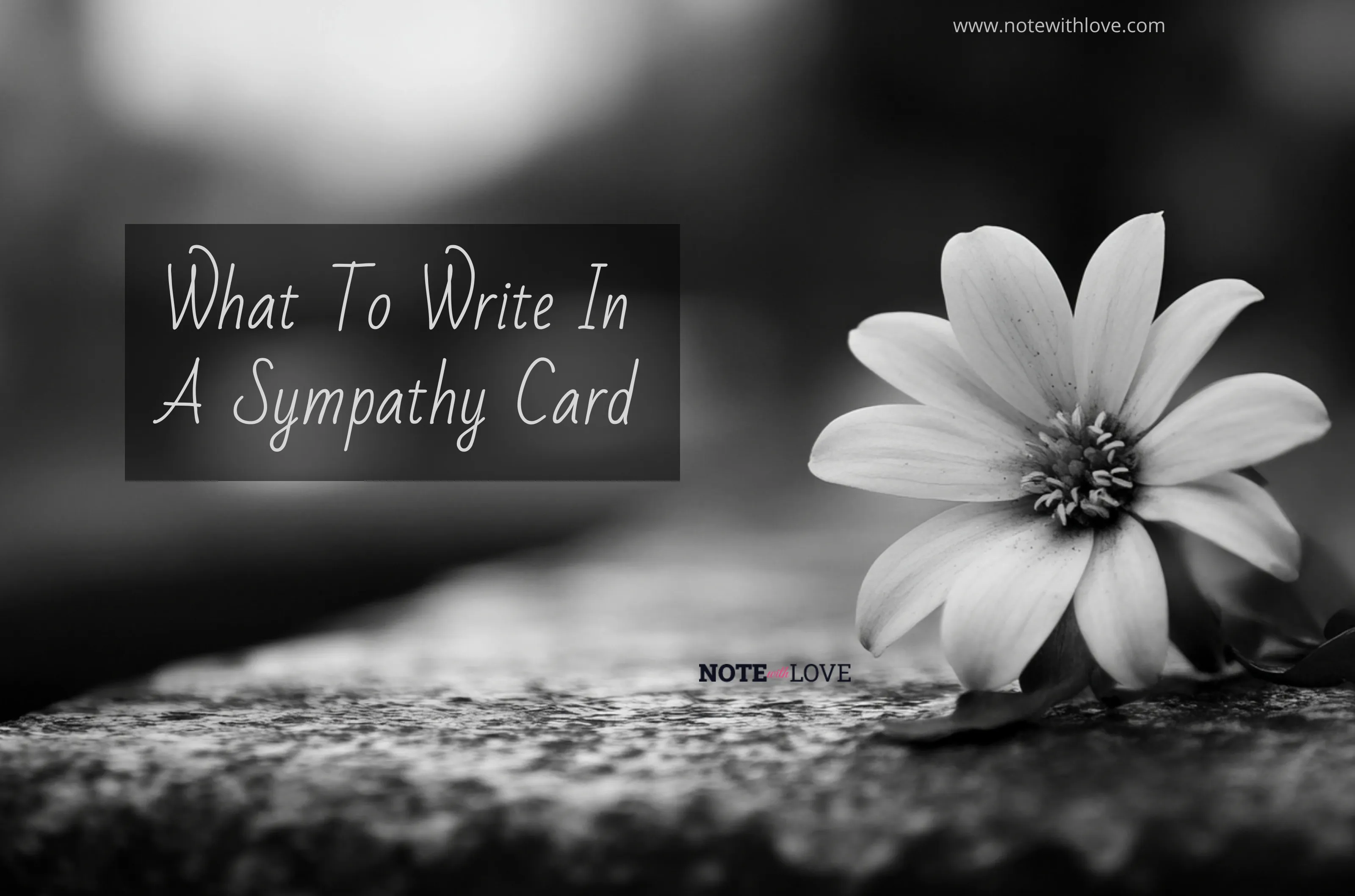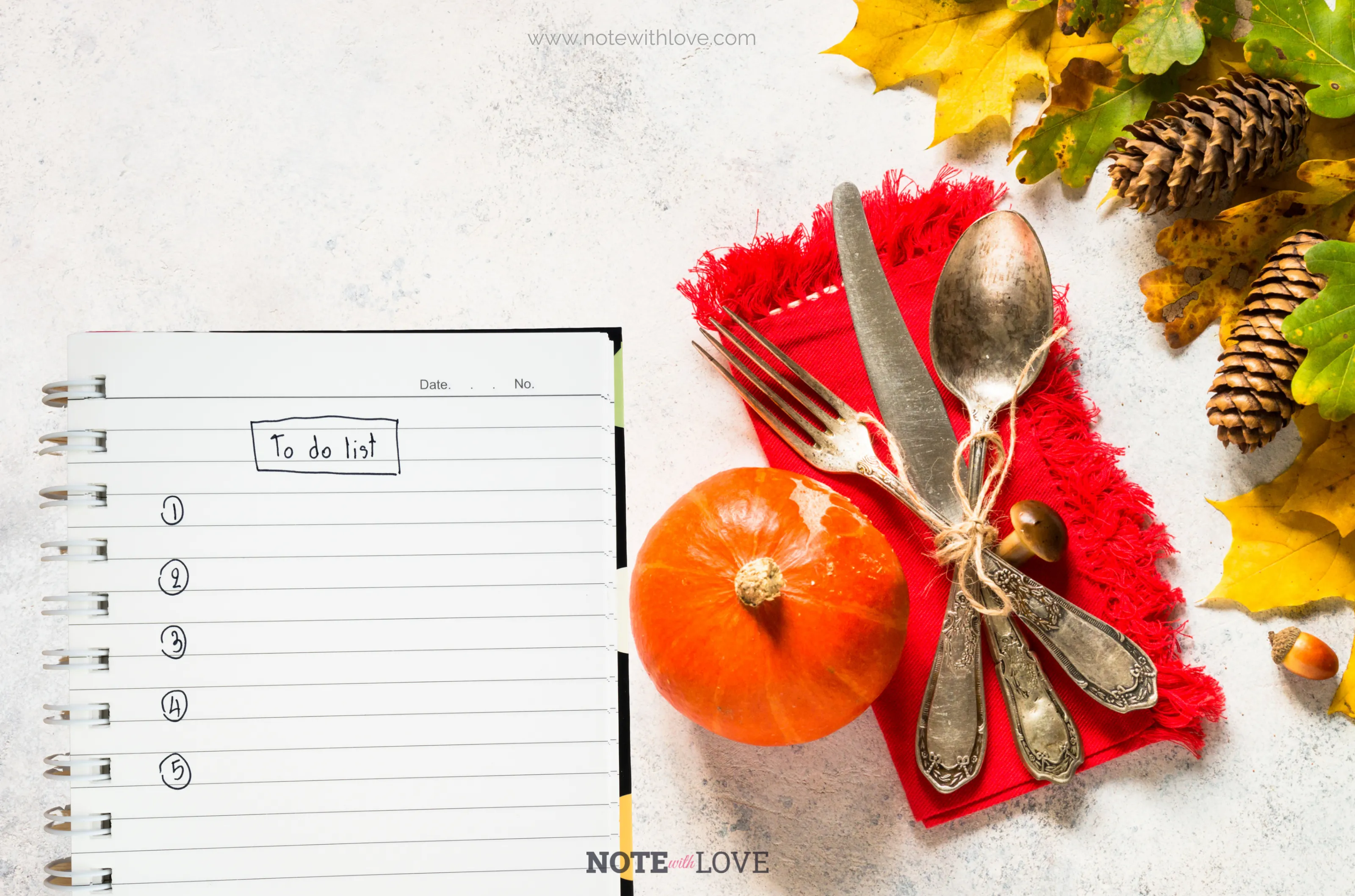- Friend
- Family
- Party ideas
- Thanksgiving
- Friend
- Family
- Message
What To Write In A Sympathy Card
by Note with Love Team - Sep 26, 2024
We often write little notes to convey our love and emotions to our near and dear ones. Yet it becomes difficult when we have to write a sympathy card. Crafting a perfect sympathy message can be challenging as you want to bring comfort to the bereaved person with your words but don't want to say something that may come out as insensitive. Some may not write sympathy card at all for fear of putting out the wrong words.
So here we have put together some pieces of advice on how to write sympathy cards. You just need to remember it's the feeling that counts. So let's start.
What Should A Good Sympathy Message Have?
When you write sympathy card, your motivation is to let loved ones know that you are there for them. A good sympathy message should have warmth and care for the grieving person and let them know that whatever they are going through they are not alone in this.
You can use readily available sympathy cards with printed messages for this purpose. However, writing something from the heart is always more appreciated.
Not that the printed messages are not good, in fact, they are great. But handcrafted messages are particularly valued.
These messages hold more sentimental value to the reader as they can relate your words with the memory of the person they are mourning. So when you can, add a personal touch to the message, and include a fond memory or anecdote with it.
When Should You Send A Sympathy Card?
There's no perfect time for sending a sympathy card. You can send your condolences right away, a few days later, few months later, or even a year later.
Writing sympathy card a little long after the death of a person is better than not writing it at all. The person who is gone, is gone forever and their family still misses them. Therefore, whenever you are sending the sympathy card, they will appreciate your love and respect for the deceased person.
Tips For Writing Your Sympathy Message
Your sympathy message should carry your emotions to the reader. But if you are at a loss about how to pen it or just need to see it does not lack in any way in expressing sympathy for the reader's loss then this next part is worth giving a read. Here we have given a few simple tips. Using these you can craft a sympathy message with more ease and send your heartfelt care in appropriate words.
- Write in first person
Writing your condolences in the first person is a must. It makes the reader feel as if you are talking directly to them. So you should write "I will really miss his jokes" instead of "He will be missed". They will highly appreciate it.
- Speak From The Heart
Store bought cards have nicely written sympathy messages. Their writers know what to say in a sympathy card of course! But rephrase them in your own words. The person who reads it will be able to connect the words to you and know how much you care for them as you've put so much work. We know it's difficult to craft such a message but trust us your efforts are worth a try.
- Appreciate the Life of the Deceased
Photo by Ivan Samkov on Pexels
Losing someone is devastating. When you are writing sympathy card to show support for someone in this trying time, try to celebrate the life of the person who died. Words cannot bring them back, but sharing a nice anecdote or a personal story can remind the bereaved of the good life of the deceased person.
Share a simple incident that put a laugh on your face or why you respected, loved and admired the person who have died. Add a personal touch to your message by including "Everytime I visited Aunt Sierra she would bake me cookies", "Mr Green always knew how to make us laugh on his jokes" and something like this.
Penning all these in words can feel overwhelming, especially if you didn't know the person who died personally. Even if you only knew someone through the receiver's stories mentioning in the sympathy message will be very much welcomed by the receipient of the message. "From your childhood stories, I know Mr Brown was not only a great dad but also a charming person."
- Keep Your Message Brief
Photo by Steve Johnson on Pexels
Writing short messages does not mean you care less or did not take time to craft a well-thought-out message. Rather a nicely composed condolence message should be brief and have little to no ambigous words that do not add to the value of your emotions.
Particularly if you are sending the message right after the death, the bereaved person may be busy with service and other procedures. It will be easier for them to go through a short but hearty condolence card.
- Talk about the person
Photo by RDNE Stock project on Pexels
When you craft a sympathy message, mention the deceased person by name. Sometimes we forget to mention the name or avoid it intentionally. But this well thought gesture may come off as a lack of warmth to many.
- Address death
While you are wondering what to write on a sympathy card, remember to mention death. The first step to healing is acknowledging that someone has died. While many prefer to write messages avoiding the grim word death. Using it can be helpful. It indicates to the grieving person that he can talk to you about it without hesitation.
- Offer to Help
Photo by Tima Miroshnichenko on Pexels
Sometimes the grieving person is very close to us, sometimes they are our acquaintances. When we are sympathizing with a close one, we can and should offer some help. You can offer to help with cleaning their lawn, maybe look after their kids, cook a meal, or bake some cookies. Remember every sincere gesture carries love and support in this sorrowful time.
- Following Up
It is a good practice to say "I will follow up in a few days" rather than asking "Call me if you need anything". Although both may imply the same thoughtfulness, when you offer to follow up, the sorrowful person feels more cared for. Besides they also know they can contact you if they need anything implicitly from your message.
What Not To Say In A Sympathy Card
Photo by cottonbro studio from Pexels
When you are signing a sympathy card you mean nothing but care for the intended recipient. However, how you word your emotions may impact the meaning it carries to the reader. While crafting a message, make sure you don't hurt the grieving person instead of sympathizing with them. Avoid doing the following and you will be good to go.
- Saying “I Know How You Feel”
Every person experiences loss differently. So although you may have gone through a similar trauma, the receiver of your message may not experience it the way you did. Writing "I know how you feel" on a sympathy card can feel overwhelming for the reader.
- Offering Words Of Advice
Unfortunately, we may have lost someone - a friend or a family member. And something like - taking a break from work, taking a break from social media, doing charity, or spending more time with your family may have helped greatly with the healing process.
But as we already mentioned that everyone processes grief differently, and your method of healing may not work for someone else. Hence avoid writing something like "You should go on a long break", or "You should work more and keep yourself busy". If the griever tries them and does not find the healing they are looking for, the mourning process will become more difficult for them.
- Common Judgemental sounding Clichés
Do not write "This happened for a reason", "She is in a better place now", "He is in no pain anymore" or something like this. Although you may feel this way, these messages sound judgemental and do not reduce the grieving person's sorrow. These sentences also fail to capture your love and compassion for the deceased person.
If you are still not confident about how to sign a sympathy card the right way, you can check these condolence messages. You can use them directly or take some ideas to formulate your own. It is up to you.
Conclusion
Losing someone is distressing. The best thing you can do at such a time is to show your support and care for the bereaved person. Sending a condolence message is only a small but impactful gesture in this process.
Trending in Notes
If I had a dollar for every time you’ve made my life better, I’d be the richest person in the world. Here’s to you, my love—happy birthday!
I may have taken you for granted at times, and things may have been tense or uncomfortable recently. But I do want you to know how much I value you and how happy I am to have you in my life. This Thanksgiving I am thankful that I have you.
You May Also Like


- Friend
- Family
- Thanksgiving
- Celebrations
21 Best Thanksgiving Movies to Watch With Family In 2025

- Friend
- Family
- Thanksgiving










